Today, we’re handling a basic subject for each grounds-keeper out there: noxious plants. While a portion of these plants could grab your attention with their wonderful blossoms or rich foliage, don’t be tricked. They might be the gardening equivalent of Trojan horses, poised to overrun your yard and obliterate native plants.
Obtrusiveness shifts by locale, so a plant that is innocuous in one region could be a threat in another. Go along with us as we reveal the main 10 obtrusive plants that you ought to mull over prior to planting. How about we make a plunge and find which plants to keep away from.
English Ivy
First up on our intrusive plant watch list is English ivy, the exemplary ground cover known for its lively development and shade resistance. While certain grounds-keepers should seriously mull over it a gift for its capacity to outcompete weeds, English ivy’s forceful nature has landed it on the rundown of the most famous nursery intruders. Especially risky in the Pacific Northwest, this plant doesn’t have the foggiest idea when to stop its determined spread. Besides the fact that it gets away from garden limits, however it likewise represents a huge danger to different plants, gagging out local species and overwhelming scenes. If you’re planning to plant English ivy in your garden, you might want to reconsider and go with something else that won’t be as harmful to the environment.
Bugleweed
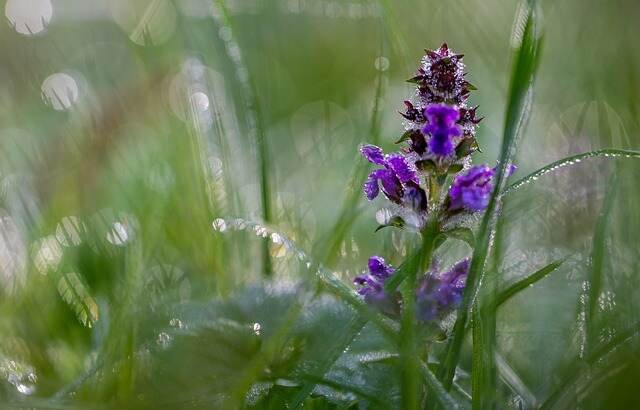
Next on our list of garden intruders is bugleweed, also known as ajuga. Praised for its captivating purple blossoms and its knack for suppressing unwanted weeds, ajuga might seem like the ideal choice for those shady spots in your garden. However, don’t let its beauty fool you. Ajuga’s mat-forming habit means it can quickly become more of a bully than a beautifier, especially in warmer climates where winter frosts don’t naturally curb its spread. Before you know it, ajuga can assert dominance over your garden or lawn, proving once again that even the prettiest plants can have a darker side when it comes to invasiveness.
Sweet Autumn Clematis
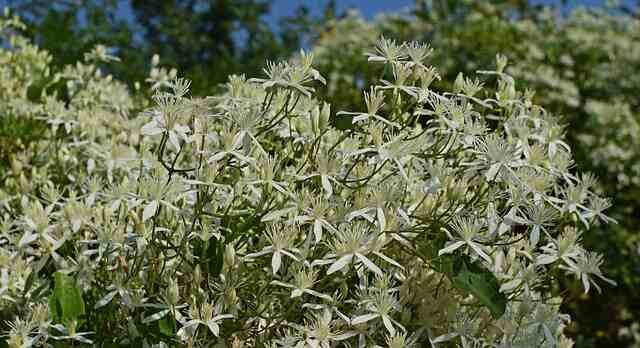
Moving on to number three, we encounter the sweet autumn clematis, with its enchanting fragrance and generous drapings of delicate white flowers that bloom in late summer into autumn. This climber might initially seem like a dream addition to any garden. Yet beneath its charming facade lies a vigorous grower that knows no bounds. Sweet autumn clematis can rapidly take over fences, trellises, and even nearby trees, casting a shadow over less assertive plants. Its ability to self-seed prolifically only adds to its invasive potential, spreading its reach far beyond where it was originally planted. A cautionary tale in the world of gardening: not all that blooms beautifully plays nice.
Butterfly Bush
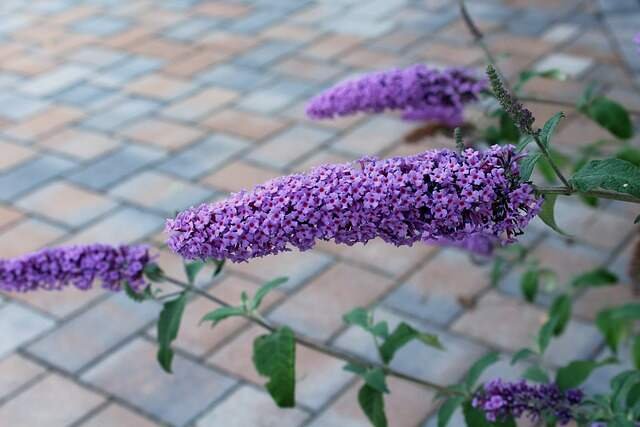
Now, at number four, we introduce the butterfly bush, celebrated for its ability to attract butterflies and other pollinators with its vibrant blossoms. Despite its appeal to wildlife, the butterfly bush has proven to be a problematic invasive, especially in the Pacific Northwest and parts of the Southeast, where the climate closely mirrors its native environment. The issue with butterfly bush lies in its resilience and ability to regenerate, particularly in regions colder than zone 6, where it dies back to the ground each winter only to return with vigor in spring. Though it may lure in butterflies, its scent is less than desirable to human noses, serving as a reminder that not all attractive plants make good neighbors in our gardens.
Chinese Wisteria
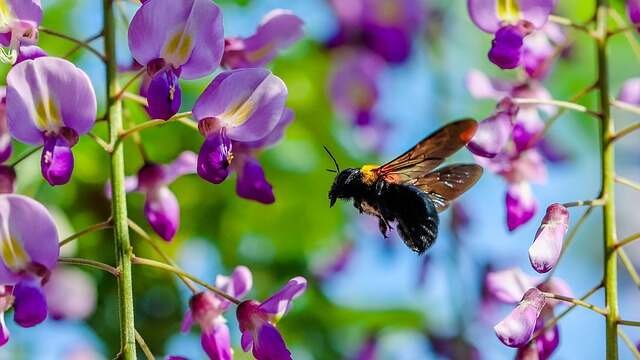
Number five has Chinese wisteria. Its cascading blooms are very enchanting. However, it’s a very aggressive and harmful tree. It’s a climber type of tree that grows rapidly and harms other plants.
Lantana
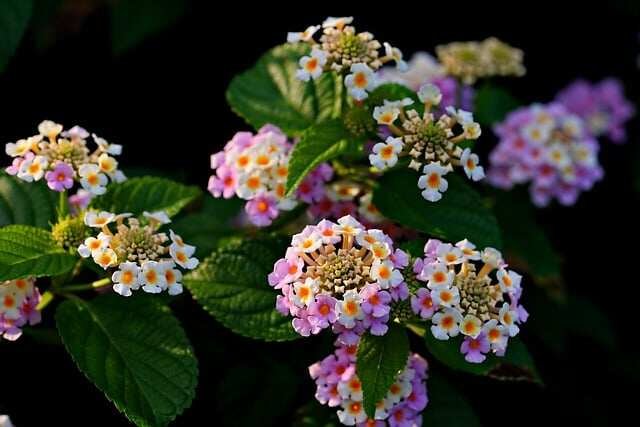
Our sixth entry on this overview, lantana, highlights exuberant lots of roses that can change any nursery into a tropical paradise. In any case, under its striking outside, lantana reveals a tireless prominent individual, especially in the warm conditions of the Southern US. Local plant networks face serious dangers because of its quick spread and foundation across various environments. Nursery workers in cooler environments may securely see the value in the magnificence of lantana in compartments, yet those in hotter environments ought to practice alert. This plant’s partiality for administering scenes epitomizes the hardly recognizable contrast between improving allure and regular risk.
Consuming Bush
As we move to our seventh spotlight obtrusive, the consuming hedge, we’re faced with a scene that lights up fall scenes with its searing red foliage. Beginning from Asia, this bush turns into a charming vision in fall, embellished with rosy orange berries that highlight its energetic leaves. Regardless of its tasteful allure, the consuming shrubbery has procured an infamous standing across the northern US, from the shores of Maine to the pools of Minnesota and down into the Southeast. Its forceful development propensity and inclination to spread broadly render it an impressive danger to local plant species, eclipsing its excellence with the potential for natural irregularity.
Barberry
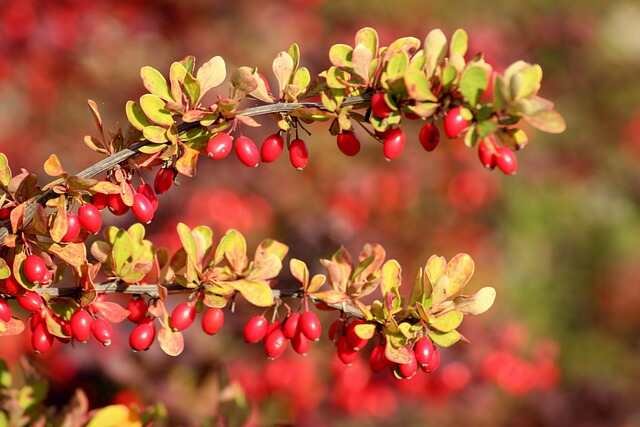
Barberry, a plant known for its striking foliage and prickly branches, could add a sprinkle of variety to scenes with its energetic leaves and berries. Barberry, on the other hand, has a dark side. This versatile bush has turned into a far and wide worry in different districts, forcefully spreading past nursery borders. Its thick bushes swarm out local vegetation as well as make a shelter for ticks, raising general wellbeing concerns. In spite of its fancy allure, the biological effects of barberry’s obtrusive nature ask landscapers to think about the more extensive outcomes of its development.
Common Privilege
Number nine on our rundown of plants to mull over is the normal privet. While it very well may be a staple in many nurseries for its thick foliage and capacity to frame speedy security screens, this quick producer doesn’t have the foggiest idea where to stop. Famous for its strength in metropolitan settings and capacity to endure weighty pruning, normal privet is likewise a considerable trespasser in nature. Privet can quickly dominate, uprooting local species and disturbing normal environments. Especially in the Midwest and Upper east, from Pennsylvania to Maine, it’s perceived for its obtrusive propensities. Its capacity to spread past nursery limits and secure itself in normal scenes has put it on many areas’ obtrusive species watch records.
Purple Loosestrife

Purple loosestrife, a plant that is shocking with its dynamic purple blossoms yet adversely affects normal environments, balances our rundown at number 10. At first introduced for its extravagant worth, purple loosestrife has transformed into a huge issue in wetlands, marshes, and streams across many bits of the US. Its quick turn of events and powerful spread grant it to outcompete neighborhood plants, provoking reduced biodiversity and upset natural frameworks. Despite its heavenliness, the biological cost of creating purple loosestrife is unreasonably high, making it one of the plants maintenance men should avoid to shield their local surroundings.
That wraps up our once-over of the best 10 prominent plants to keep away from in your nursery. While some could appear to be magnificent, their impact on the environment and your local climate can be negative. Constantly consider nearby or effortless decisions to keep your nursery prospering and pleasant. For extra developing tips and plant recommendations, remain tuned to Lay out Dew Home and Nursery. Happily cultivating, and keep in mind that the best nursery is one that is capable.



